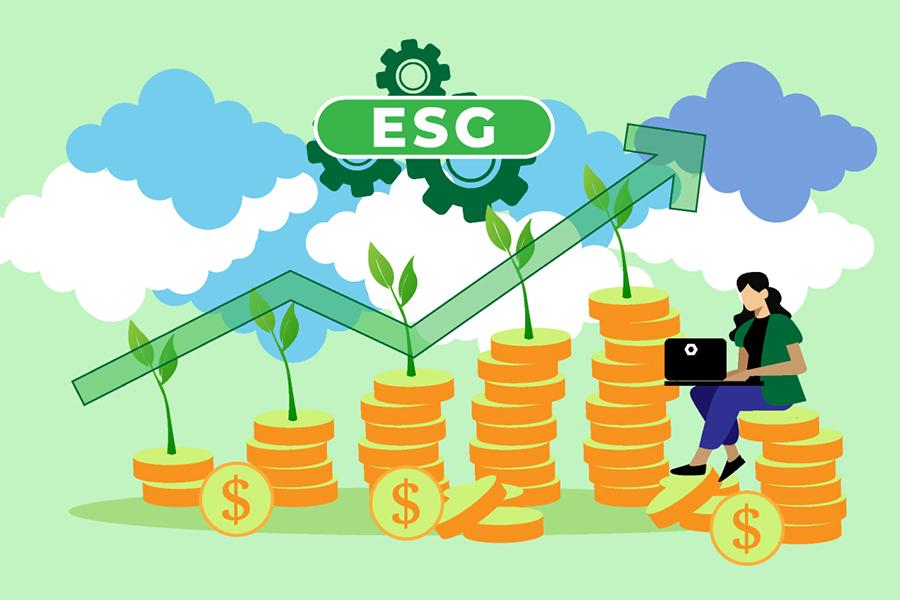Environmental, Social and Governance Investing–A fad or here to stay?
Looking at ESG risks alongside financial metrics parameters could make us better prepared in the future for unforeseen risks, such as those we have experienced during the pandemic, and emerging risks like climate change
In my conversations with clients over the past year, I have often been asked if Environment, Social, and Governance (ESG) integration in investing is just a fad or something more real. Is it here to stay and do people take this seriously? There are arguments on both sides of the table, but I would like to think that ultimately present-day asset owners are custodians of wealth for their future generations. ESG influences the long-term sustainability of a business and therefore when we integrate ESG in our investment decision-making, we are recognising our responsibility as custodians.
For investors, the impact of Covid-19 on the real economy and financial system highlighted the limitations of existing forecasting models which could not deal with non-linear, complex, systemic risks. Looking at environmental, social, and governance risks alongside financial metrics parameters could make us better prepared in the future for unforeseen risks, such as those we have experienced during the pandemic, and emerging risks like climate change. This is one of the main reasons why integrating ESG into our investment decision-making processes today is so important, and why asset managers controlling over $80 trillion of funds now subscribe to the ESG-focused United Nations Principles for Responsible Investment (UN PRI).
Responsible investing has taken different forms in the past. At a personal level, many of you will identify with moral values, ethical codes, or religious beliefs which may guide your current investment decisions. In 1994, the term “Triple Bottom Line” was coined to look at the impact of companies through the lens of financial profits, impact on people’s lives, and our planet (though it possibly missed the governance lens). The global financial crisis of 2008 highlighted the risks embedded in excessive short-termism, and the need to take the long view in capital allocation decisions. Most recently, the clarion call has been for a shift from “shareholder value creation” to advocating value creation for “all stakeholders”, something which the Business Roundtable in the US, whose members include the largest companies in the world, has embraced.
Over the past year, the Securities and Exchange Board of India (Sebi) has brought out two key regulations that will help investors use data to integrate ESG in their decision-making. The first is its mandate that the Top 1000 listed companies in India will have to publish an annual Business Responsibility and Sustainability Report (BRSR) from next year (for 2021-22 on a voluntary basis, and from 2022-23 onwards on a compulsory basis). This will drive material, sector-specific disclosures on a range of Environment, Societal, and Governance impact of each company. The second is the Stewardship Code launched in July 2020, applicable to all mutual funds and alternative investment funds (the Pension Fund and Insurance regulators have also mandated Stewardship Codes for the Pension Funds and Insurance Companies) for their listed investments, which is expected to enhance the corporate governance of the underlying investee companies.
For Indian family offices and high net-worth individuals, the broader framework of responsible investing is taking shape in three significant ways—values-based investments where the portfolio is aligned to an investor’s personal beliefs; impact investments where capital is used to trigger positive change for social and environmental reasons; and ESG integration, which is the explicit inclusion of ESG metrics in investment decisions to improve the risk-return characteristics of the portfolio. At this juncture, we see the ESG integration process primarily in the listed investments space, with only a handful of family offices having integrated ESG for their unlisted investments.
As Indian investors embark on their responsible investing journey, the important thing is to start small and gradually increase their comfort with this space. There are global companies like MSCI and Sustainalytics which provide ESG Risk scores for listed investments. Understand the ESG risk scores for listed investments, compare companies in a sector on their ESG risk scores. Understand the concept of materiality in ESG. See the correlation of returns with the scores. In India, for example, the MSCI ESG leaders index has consistently provided net returns of several hundred basis points higher than the MSCI India Index (tracked from September 28, 2007) alongside much better risk parameters—a higher Sharpe Ratio, lower Beta and lower Maximum Drawdown.
Make a beginning today by enhancing the quality of your discussions with your wealth manager and fund managers by asking them about how they integrate ESG in their decision-making process. Educate yourself and other members of your family. Each of these baby steps will create a groundswell to become part of a larger movement. Most importantly, recognise that your investment choices impact future generations.
The writer is Founder and CEO of Waterfield Advisors
The thoughts and opinions shared here are of the author.
Check out our end of season subscription discounts with a Moneycontrol pro subscription absolutely free. Use code EOSO2021. Click here for details.
